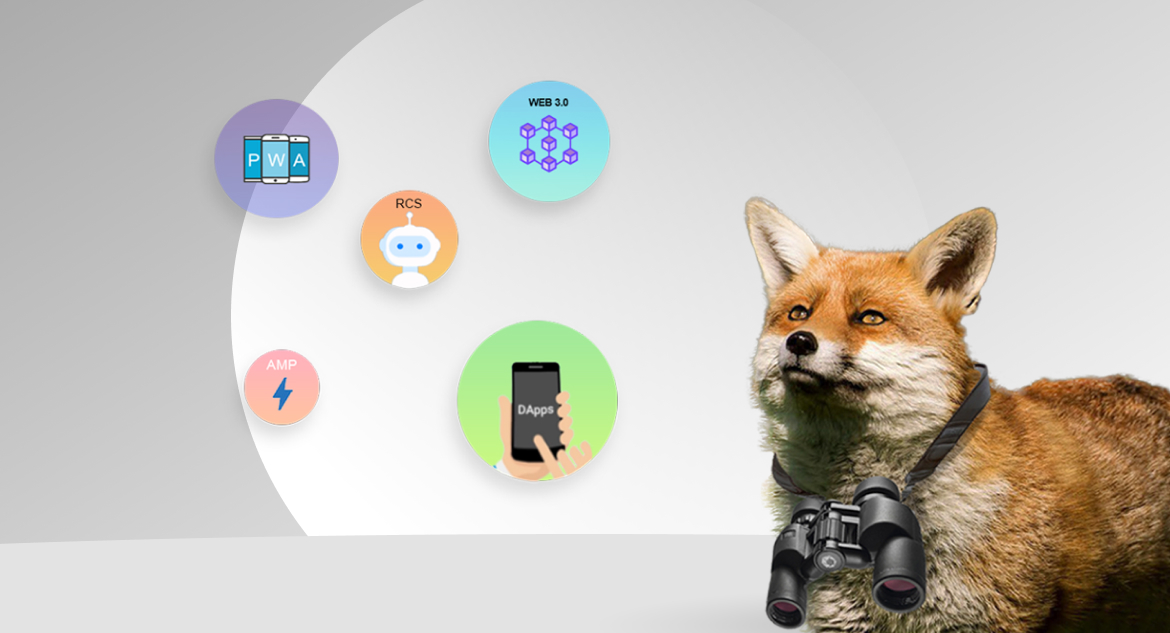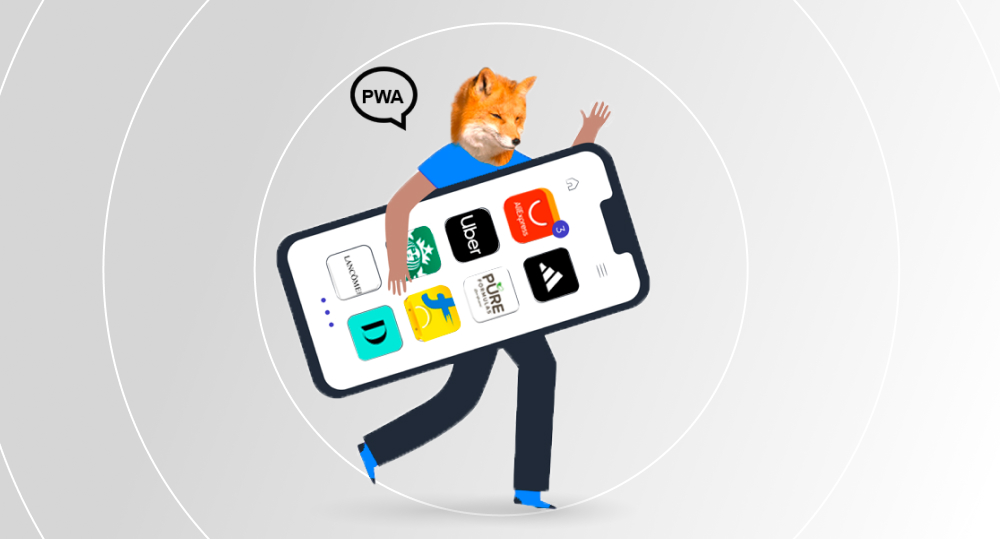What are the upcoming fintech web development trends for 2023? That's the question on the mind of every fintech developer worth their salt. And it is even more mind-bogging to the person behind the developer — the product owner, who is always striving to get ahead of the curve. So what does the future have in store?
The short answer is that we can expect more of the same — and then some. So to better understand what trends the world will throw at us in 2023, let's break down what the fintech industry is hot on in 2022.
written by:
Alexander Arabey
Director of Business Development, Qulix Systems
Contents
Why to Keep Up with the Times in the Fintech Industry?
If you are reading this article, chances are you got an idea or even a finished fintech product. Your team of the best fintech web developers has been tinkering with it for days and nights to meet all your business requirements. But the work doesn't end there, does it? All competent leaders need to stay abreast of the latest trends in the industry in which they want to thrive.
This is especially true for fintech. Since 2017, its global revenue has doubled, from $30.5 to $61 billion. Watching how rapidly the fintech sector is booming, it's no wonder that many startups and SMBs can't cope with the frantic flow of new information, technological advancements, and up-and-coming trends.
To survive in this harsh environment, you need to remain a fintech company spearhead who is always on top of everything, striving to offer customers fresh innovations. Are you ready to become one?
Then let's get started! Our team has compiled a list of 7 trends in fintech and banking web development that rule the roost in 2022 and will significantly shape the entire field in 2023.
7 Fintech Web Development Trends You Need to Know in 2022
#1: Robotics Customer Service. Bots Making Life Easier
We are on the cusp of a new era of digital transformation in web development for fintech, with artificial intelligence and machine learning getting smarter. In particular, customer service is an area where robots are starting to make a big impact. By automating key client service tasks in banking apps with AI-powered chatbots, fintech companies can not only enhance customer experience but also reduce costs. Juniper Research estimates that by 2023 chatbots will save $11 billion annually in industries such as banking, healthcare, and retail.
There are a bunch of other benefits to using bots in customer service. For one, robots never get tired or emotional, so they can provide a consistent level of service 24/7. They can also handle large volumes of client queries quickly and efficiently. Plus, robots can be programmed to serve each customer in a personalized way.
This trend will only grow in the coming years, so a web application developer for a fintech startup should watch out for these new industry standards.
Examples to check out:
- Eno. Meet a chatbot developed by one of America's largest banks, Capital One. Eno helps clients address their banking needs without having to wait on hold or go through a complex phone menu. It is available 24/7 and can answer questions about account balances, transactions, and help customers with credit cards and loans. In addition, this chatbot is omnichannel, meaning it is available anywhere from the website to a smartwatch.
- Haro. This chatbot welcomes clients of a famous Hong Kong bank — Hang Seng Bank. All around the clock, it guides bank customers through any kind of financial operations: money transfers, currency exchange, and credit cards. Haro is available as a mobile, web, and WhatsApp assistant.
- Ceba. It is a chatbot from Australian Commonwealth bank. Ceba is always ready to answer a broad range of common banking questions, conduct onboarding sessions for new clients, and connect with the right human assistant depending on a person's specific need. Users can interact with this bot on the official website and in a mobile banking app.
#2: Micro Front-Ends. A Trend Expanding the Microservices Idea
Micro front-ends are a hot new trend in fintech web development services. And it's not hard to see why.
This technology introduces a way of building web applications using a modular approach, in which monolithic front-end software is divided into smaller, independent modules. These modules have their own teams of fintech web developers who create, test, and deploy each part separately.
This approach has several advantages. It facilitates code maintenance and refactoring, allowing teams to work on different sections of the front-end concurrently. Using micro front-ends also simplifies scaling a web development team structure for a fintech company, which in turn streamlines project management.
There are still some challenges to overcome with micro front-ends, but the benefits are clear. As the fintech space matures, we expect to see more and more web and mobile apps built using this kind of software architecture.
#3: Web3 & Blockchain. Innovations Enhancing Security
With the rise of digital currencies like Bitcoin and Ethereum, fintech web developers are beginning to explore new ways to use the Internet for building apps. Two of the most promising technologies in this area are Web3 and blockchain.
Web3 is a new generation of web technologies based on the principles of decentralization. Web3 innovations, such as blockchain, allow users to interact with each other directly, without intermediaries like banks or governments. This opens up a new level of freedom and autonomy when it comes to financial operations.
Blockchain lies behind Bitcoin and other cryptocurrencies. It is a distributed database that provides secure, transparent, and tamper-proof transactions. Blockchain is used not only in cryptocurrencies, but also in supply chain, identity, and data management.
Together, these forward-looking technologies hold the potential to revolutionize the financial sector, making it more open, efficient, and secure.
Examples to check out:
- Internet Computer by Dfinity. It's an open-source blockchain network, where users can create their own smart contracts and decentralized apps of any size (dApps, we'll cover them later in the article). The service allows users to store smart contracts directly on the blockchain, embed them in browsers as their own website, and access them without wallets or tokens.
- Propy. It's a decentralized Web3-based platform that uses blockchain technology for global real-estate transactions. The goal of this virtual marketplace is to move all property deals online, making them simple, secure, and transparent. Propy users can buy and sell realty not only with the use of traditional money transfers, but also through cryptocurrency and as NFTs.
- Evernym. This platform is on a mission to make it easier for everyone to create, use, and manage verified credentials online via distributed ledger technology. The company has developed a new paradigm for protecting private data — Self-Sovereign Identity (SSI). This way, users can take full control over the security of their data, sharing only what they want and when they want.
#4: DeFi & dApps. New Techs Eliminating Third-Party Access
Along with the rise of Web3 and blockchain technologies, we've noticed an increasing trend toward two other types of modern tech: DeFi (decentralized finance) and dApps (decentralized applications).
DeFi is a growing movement among fintech developers that is shaking up the traditional financial system. Using decentralized technologies, DeFi enables its users to interact with each other directly, without any third-party involvement. This results in lower fees, improved transparency, and security.
dApps are another type of decentralized software built on a decentralized network, such as Web3. Unlike traditional applications, dApps are not controlled by a single entity. This enhances cybersecurity, making fintech apps more resilient to attacks and censorship.
Examples to check out:
- PancakeSwap. A dApp with a yummy pancake-themed web design that works as a decentralized exchange. It is built on Binance Smart Chain and uses smart contracts to conduct trades. Users love PancakeSwap for the liquidity of listed assets, a wide range of features, and low transaction fees.
- Compound. Another dApp where users can deposit cryptocurrency funds to generate interest, Compound is built on the Ethereum network and allows its clients to deposit 14 types of digital currencies.
- Augur. It is a decentralized oracle and prediction market protocol built on the Ethereum blockchain. It allows anyone to bet on the outcome of future events. The Augur protocol is open-source and transparent. It uses the wisdom of the crowd to predict the future.
#5: Progressive Web Apps Driving the Web Forward
A new breed of web development technology well-suited to fintech products is progressive web apps (PWA). These are online services designed to look and feel like native apps. PWAs are built using modern web development languages, such as HTML5, CSS3, and JavaScript.
Native apps are typically faster and more responsive than their web counterparts, but they require a deep technical expertise to build and can be expensive to maintain. PWAs are designed to fix these problems by providing users with a fast, hassle-free, and app-like experience. Such solutions can work offline and are responsive on any device, from mobile to desktop. PWAs are created to be installable, so that users can add them to their home screens without having to visit an app store.
Some of the biggest names in the financial industry already use progressive web apps, and our own experience suggests that PWAs are poised to take the industry by storm.
Examples to check out:
- Eleganza. This clothing store has a Magento engine, which requires periodic updates to keep the website running flawlessly. But when Eleganza was about to update it again, the owners decided to shorten the load time and cut the chance of potential server crashes. Three months later, they launched their PWA. As a result, the company boasted a 372% boost in the server's response rate and a 76% increase in page hits.
- AliExpress. The major problem with the old app of this eastern Amazon competitor was the low number of downloads. But with the creation of an innovative PWA, the retailer's popularity has multiplied. This timely solution helped Aliexpress reach more than 230 countries, providing an installation-free and smooth experience on smartphones and desktops alike. What's more, the total number of sign-ups jumped by 104%.
- Uber. When the company was looking to expand into new markets, it decided to rebuild its app from the ground up into a PWA to ensure a booking experience comparable to that of the native app. As a result, Uber managed to translate the native experience into a super lightweight web service that weighs only 50kB and loads in 3 seconds even on a 2G network.
#6: Accelerated Mobile Pages Breaking into Web Development
How many seconds does your brain need to decide that a website is good enough to stay? Google states 5 seconds is enough. That's why modern web development for fintech requires special attention to the loading speed of a web product.
Here’s where AMP comes into play. AMP, or Accelerated Mobile Pages, is a web component framework that allows websites to load faster on mobile devices. AMP pages are typically 30–60% lighter than traditional web pages, which means they load much faster on mobiles with a slow internet connection. This technology can be a game-changer in fintech, where time is of the essence and users often access banking and financial data on the go.
While AMP is not mandatory for all fintech websites, it is something to consider if you want to provide a better experience for mobile users.
Examples to check out:
- eBay;
- AliExpress;
- Zalando;
- Myntra;
- Newegg.
#7 Serverless Architecture. Developers Creating Software Without Infrastructure
As the entire world has already seen, fintech services are evolving rapidly, and serverless architecture is at the forefront of these changes. It enables faster development, greater scalability, and lower operational costs. How?
Serverless architecture is an entirely new way of building applications that has nothing in common with traditional, always-on server infrastructure. Instead, serverless apps rely on a combination of cloud-based services, event-driven programming, and stateless computing.
What perks does this cutting-edge technology bring to fintech startups? First, serverless apps are easier and cheaper to scale than traditional server-based software. Second, they're more resilient to crashes, as there is no single point of failure. And third, they boast high-end data security, as there is no server infrastructure to manage and keep safe.
Serverless vs. Server-Based App Architecture
Serverless Architecture
Server-Based Architecture
Price
This option can cut costs by 70 to 90%. No expense for functionality, hardware, or personnel.
It requires high costs for equipment installation and maintenance, office space, and human resources.
Security
Highly secure. Servers are located on the cloud, but data encryption and additional security measures ensure data safety.
Highly secure. All servers are located in the same building and are inaccessible to unauthorized staff. The only threat is a breach of security in the building.
Scalability
The top solution for scalable software. Allows you to scale up and down as soon as something changes.
Unprofitable ratio of resources spent to the result obtained. Scaling with this option is expensive, slow, and hard to do.
Support
Fixing any problems you have is the headache of your cloud provider. They deal with them quickly and efficiently.
This is where only your IT team can solve problems. If they can’t fix a particular issue, you risk losing access to your data for a long time.
Accessibility
Without internet connection, your team will not have access to the data. Can lead to negative consequences for your business.
No internet connection is required to access the data. Ideal for companies residing in locations with unstable internet.
You Never Know What Tomorrow Will Bring, or Do You?
There's no doubt that fintech is one of the most fast-changing industries. With new technologies and trends popping up all the time, it can be tough for fintech providers to keep up. But if you're not watching the latest trends in software development, you could be missing out on some lucrative opportunities for your business.
Luckily, you don't have to go alone. With our comprehensive guide, you and your team will always be at the top of the heap. Good luck!
Any questions? Contact our superhero squad! We'll help you develop the next big fintech app and keep it ahead of the curve, so you can focus on what you do best — running your business.

Contacts
Feel free to get in touch with us! Use this contact form for an ASAP response.
Call us at +44 151 528 8015
E-mail us at request@qulix.com










